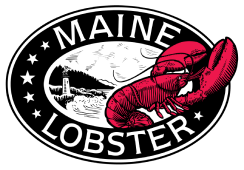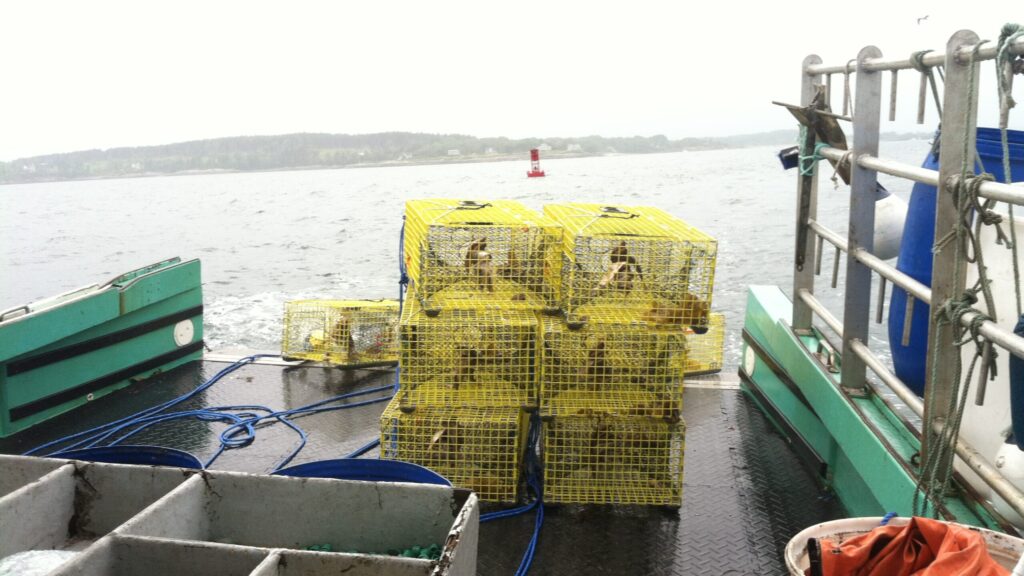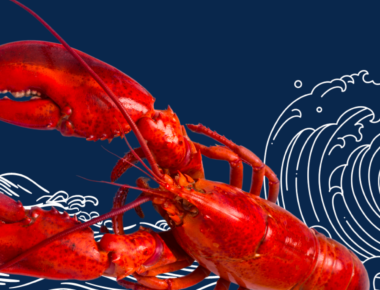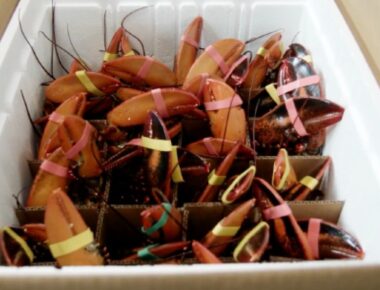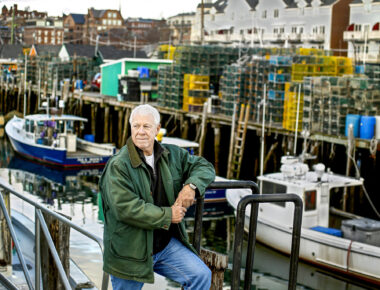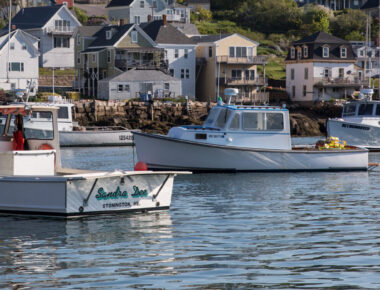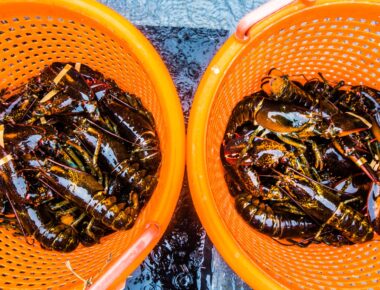
Welcome to Maine Lobster’s guest blogger series, featuring Merritt Carey, a one-time lawyer and anytime lobsterer. Merritt lives in Yarmouth, Maine with her husband and three children—she divides her time between communications projects, parenting, and her new lobstering passion. We’re pleased to share her experiences as a rookie sternman, learning the ropes of the lobster industry.
Maine days are long in July, but it was still dark when I arrived at the dock a little before 5am. The wharf was empty, the day starting to break, gray and overcast. I had slept little the night before, afraid to oversleep, full of nerves about what the day would bring. My brand new wet weather gear, purchased for me the day before by my husband, felt stiff and too new. I am a lawyer-turned-communications consultant, a wife and mother of three; that morning, sitting on the dock waiting, I was nervous as a kid right out of school about to start my first job. Today I would be a sternman.
Soon, I heard the low rumble of a diesel engine, familiar to me from many years along Maine’s coast. The vessel, Storm Walker, came into view. I knew the captain, John Jordan, relatively well; our kids were friends at school and our families often spent time together. John runs Calendar Islands Maine Lobster Company, a coop owned by Maine lobstermen and chefs who create gourmet lobster products from their catch. John splits his time between lobstering and running his business, but he still sets 800 traps. His days on the water are long, sometimes requiring a third guy to help. Today I was the “third guy.” And I hoped I would be more help than hindrance.

I stepped aboard. A few minutes later, John’s regular sternman Levi Gloden, a 22-year-old from Oxford, bounded down the ramp and hopped on. Off we set, the gray sky lightening slightly but threatening rain with a south easterly breeze. I knew my way around boats, but I knew little about lobstering. I couldn’t shake that awkward unsure-of-myself feeling.
John and Levi hauled the first “string” while I watched. Each lobster buoy typically has more than one trap attached, in John’s case, he has 10 traps to a buoy, or a string.
Soon I was baiting: prepping the bait by skewering 8-10 small bait fish called Pogies so they were ready to go. Next, I began banding the lobsters after each string, securing the claws with rubber bands for easier handling—and I was pinched hard twice during the day while holding un-banded lobsters.
I learned quickly that size and sex are paramount in lobstering. Each lobster is carefully examined, identified as male or female, and measured. We hauled 350 traps that day and caught hundreds and hundreds of lobsters—each lobster that met size requirements was carefully inspected.
By midday, I was helping to empty the traps, measuring lobsters and identifying some as “keepers.” All the while, John and Levi patiently instructed: this is how you measure for size, this is what a female looks like, and this a male. John had me place my “keepers” in a separate bin, so he could confirm I hadn’t kept any illegal lobsters. Each time he went through my bin without having to toss any of my “keepers,” I felt like a kid who had just aced a pop quiz. By the end of the day, I was accustomed to the rhythm. We’d haul a string, and while the traps were being reset and John navigated to the next buoy, Levi and I banded the lobsters we’d just caught and prepped bait for the next string. And so it went, for 35 strings.
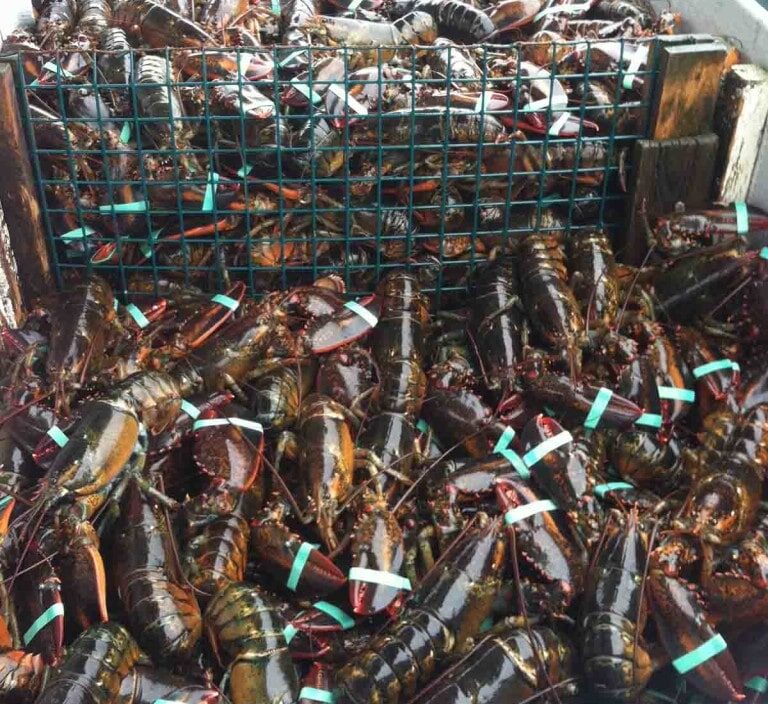
I don’t know how much actual “help” I was that day, but my learning curve was steep. John and Levi were patient and easygoing as I fumbled along. I was struck by the speed and grace with which everything on board got done. I was equally impressed by the level of thought that went into each decision: whether to move a string that had not produced much, when the lobsters would head out to deeper water after molting, how the tide affected resetting the traps.
That night, I had sea legs, the sensation that I was still moving though I was back on terra firma. Still, I slept the deep, hard sleep that comes from a day of good work in the salt air. I dreamt of lobsters and awoke the next day slightly sore but itching to get back on the boat.
